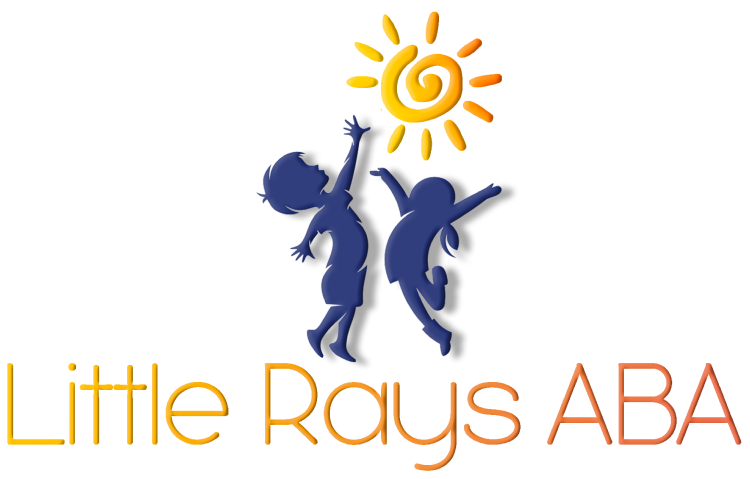What Are the Two Types of ABA? Effective Methods Explained
Applied Behavior Analysis (ABA) is a form of therapy that applies behavior analysis principles to promote desired behavior changes, improve communication skills, and address behavioral disorders and challenges. Often associated with autism spectrum disorder, the American Psychological Association recognizes ABA therapy as a proven form of treatment having a rich foundation in evidence-based practices. A main strategy used by ABA therapists includes enhancing motor skills, communication abilities, and social interactions through structured interventions. As the demand for effective therapeutic methods grows, understanding and implementing ABA strategies becomes increasingly important for those seeking progress in behavioral and developmental areas.
Understanding ABA Therapy
ABA therapy is built on methods aimed at identifying and modifying behaviors in structured ways. Its primary application lies in understanding the relationship between environmental factors and actions, tailoring solutions to each case. Therapists employ techniques guided by the principles of behavior analysis to improve skills systematically.
This therapy proves beneficial for individuals with autism spectrum disorder, focusing on creating positive behavioral changes. The targeted strategies, applied consistently, ensure progress over time, making it a cornerstone in behavioral therapy disciplines.
Definition and Goals of ABA
Applied Behavior Analysis (ABA) is a scientific approach rooted in behavior analysis that seeks to understand the reasons behind specific actions and replace problematic behaviors with desired ones. It focuses on cultivating skills and reducing challenges by breaking down complex tasks into small, manageable steps.
The goal of ABA therapy is to foster independence and success for individuals, employing tailored ABA strategies to address communication, motor, and social skills. It provides a structured framework for understanding behavioral patterns and enhancing person work-centered outcomes.
ABA strategies such as positive reinforcement serve as a vital tool in encouraging desired behaviors. By offering rewards for progress, therapists help individuals make meaningful advances, unlocking their potential over time. Every effort is aligned with achieving greater autonomy and a lasting positive impact.
Key Principles of Applied Behavior Analysis
Positive reinforcement stands as the cornerstone principle of Applied Behavior Analysis. It involves providing rewards for desired behaviors, ensuring motivation for repeating these actions. This strategy helps individuals cultivate skills like social interaction effectively.
Behavior analysts implement ethical, highly personalized ABA strategies to address individual needs, offering support in natural environments or structured settings. This approach ensures that progress aligns seamlessly with real-world applications. Consistency and clarity are critical in achieving lasting outcomes.
Through focused assessments, ABA therapists monitor behavior patterns, identifying areas for targeted intervention. The application of reinforcement systems, including negative reinforcement, creates pathways for encouraging positive behaviors while reducing challenging ones. Together, these principles make ABA therapy a comprehensive and adaptable treatment model.
Comprehensive ABA Therapy
Comprehensive ABA therapy delivers an all-encompassing approach that touches on multiple aspects of development. From communication skills to motor abilities, it emphasizes teaching a wide variety of skills to individuals.
By operating within natural environments or with structured ABA strategies, Comprehensive ABA focuses on fostering growth across social, academic, and behavioral areas. Its versatility makes it a foundational therapy for individuals on the autism spectrum and beyond.
Overview of Comprehensive ABA
Comprehensive ABA incorporates tailored ABA programs to focus on improving all areas of an individual’s life. These programs prioritize development across multiple domains, including communication, motor skills, and social interactions. With interventions occurring in both natural environments and structured settings, adaptability is key to its effectiveness.
Therapists employ ABA strategies designed to align treatment plans with individual goals. The diversity in natural environments, particularly in natural environment training, allows for skills to be generalized and practiced in real-world situations. This ensures a holistic approach to therapy.
Overall, Comprehensive ABA works with long-term objectives in mind, frequently reassessing the progress and adapting interventions over time. Families and therapists collaborate within these programs to foster meaningful change and sustained growth for individuals under care, addressing both short term and long-term goals.
Techniques Used in Comprehensive ABA
Comprehensive ABA therapy relies on a range of chosen techniques, including pivotal response training, to teach and reinforce positive behavior patterns effectively.
Prominent methods include:
- Discrete Trial Training (DTT): A structured, focused approach that uses prompts and reinforcements to shape desired behaviors, particularly effective for breaking down complex skills, similar to those in intensive behavioral intervention.
- Picture Exchange Communication System (PECS): Employs visual aids to enhance communication skills and improve overall language skills.
These techniques, developed through evidence-based research, ensure tailored interventions based on the specific needs of the individual. They provide opportunities for learning within natural environments and controlled settings alike.
The adaptability of these methods through ABA programs guarantees meaningful progress, ensuring skill development and behavioral improvements.
Benefits of Comprehensive ABA for Children
Comprehensive ABA therapy brings tremendous benefits, especially for children, shaping essential skillsets that contribute to long-term development. Key benefits include enhanced social skills, improved communication skills, and refined motor skills.
By implementing ABA strategies that involve structured reinforcement systems, children gain confidence in navigating social settings. Communication barriers are addressed effectively, allowing better expression and understanding.
The therapy focuses on aiding children in mastering fundamental skills while fostering independence, making it an ideal intervention for autism spectrum disorder. Continuous treatment provides measurable progress and leads to positive behavior change over time.
Focused ABA Therapy
Focused ABA therapy narrows its scope to targeting specific behavior patterns and challenges. Unlike its comprehensive counterpart, it aims for quicker interventions in addressing distinct issues.
This form of therapy operates through thorough behavior assessments, utilizing targeted ABA strategies to improve chosen areas, such as emotional responses or impulse control. It is a dynamic option for individuals requiring more immediate support.
What is Focused ABA?
Focused ABA is an applied approach targeting specific behaviors that require immediate intervention. ABA therapists conduct detailed behavior assessments to identify areas demanding prompt attention, such as problematic actions or emotional responses.
The therapy aligns the goal of any ABA program with measurable outcomes, delivering progress efficiently. By selecting one or two behaviors for improvement, individuals experience impactful yet streamlined treatment.
Focused ABA involves collaboration between families and therapists, ensuring recommended strategies address the identified challenges effectively. Goals remain achievable with targeted reinforcement techniques.
Core Techniques in Focused ABA
Core techniques of Focused ABA therapy center on encouraging positive behaviors while addressing challenges. The following approaches are widely implemented:
- Positive Reinforcement Systems: Reward systems tailored to specific behaviors.
- Behavioral Challenges Modification: Identifying causes and shifting response patterns.
- Functional Behavior Assessment: A methodology for understanding undesirable behaviors deeply.
These techniques ensure personalized interventions, providing measurable improvements within a short timeframe. Therapists emphasize ethical and adaptable methods to shape results aligned with patient needs.
When to Choose Focused ABA
Focused ABA therapy is most suitable for individuals diagnosed with autism spectrum disorder facing challenges related to specific strategies and adjustments. It’s ideal for addressing immediate behavior issues and optimizing treatment results effectively.
Parents and caregivers may prefer this therapy for situations requiring impactful interventions. ABA therapists apply practical methods to enhance progress toward results, providing insights into specific areas for growth.
Choosing Focused ABA ensures attention remains on developing short-term improvements while laying the foundation for lasting change in individuals.
Comparing Comprehensive and Focused ABA
Comprehensive and Focused ABA therapies, while distinct, share a unified goal of promoting positive behavioral outcomes. Comprehensive ABA addresses broad developmental areas, whereas Focused ABA tackles defined challenges.
Factors like symptoms severity and life needs guide the decision-making process between these approaches. Through competent ABA interventions, therapists and families collaborate to determine optimal therapeutic pathways.
Similarities Between the Two Approaches
Both Comprehensive and Focused ABA therapies share foundational principles. They rely on trained ABA therapists to deliver precise and ethical treatments. Positive reinforcement serves as a core strategy in both methodologies, enhancing ABA interventions capabilities.
Ethical practices ensure individualized attention and adherence to guidelines. Regardless of the scope, each therapy leverages reinforcement techniques and structured sessions tailored for success.
In essence, collaboration between therapists, families, and caregivers ensures measurable progress in alignment with specific patient goals for both therapies.
Differences and How to Choose the Right One
| Feature | Comprehensive ABA | Focused ABA |
|---|---|---|
| Scope | Broad developmental | Targeted behavior focus |
| Approach | Diverse techniques | Problem-specific methods |
| Key Skill Development | Wide-ranging | Specific improvement |
With Comprehensive ABA, individuals gain mastery over diverse areas, while Focused ABA addresses immediate concerns. Therapists evaluate progress periodically to determine program suitability, ensuring tailored career advancement.
Implementation of ABA Therapies
The successful implementation of ABA therapies ensures transformative results through structured processes and collaboration. Therapists work closely with families to establish personalized treatment plans.
By selecting evidence-based techniques, consistent monitoring, and regular evaluations, ABA therapy becomes a dynamic practice adaptable to individual needs. Patients thrive through structured interventions and targeted strategies.
Role of ABA Therapists
ABA therapists guide interventions by applying skills such as communication, interpersonal skills, and analytical thinking. Developing trust-based relationships remains vital for therapeutic success.
As the profession offers avenues for career advancement, therapists actively pursue specialized skillsets. Effective communication enhances patient engagement and ensures high-quality treatment plans.
Therapists also collaborate with families to monitor behavior patterns regularly, ensuring ABA programs align with developmental goals. Compassionate care remains central to their role.
Setting Up an Effective ABA Program
Establishing effective ABA programs starts with identifying program options and conducting assessments. Therapists evaluate treatment needs within structured environments.
Customizing treatment plans through tools like behavior assessments ensures results that align with patient-specific goals. Therapists monitor outcomes routinely for progress tracking.
Continuous collaboration between patients, therapists, and families creates impactful interventions, making ABA programs sustainable tools.
Real-life Success Stories
Success stories of ABA therapy highlight transformative improvements. Parents and caregivers witness how structured approaches foster long-term skills complemented by personalized strategies.
These narratives inspire hope, showing that ABA therapies create measurable progress. Individuals gain self-confidence and independence, reinforcing the impact of interventions.
Case Studies of Comprehensive ABA
Comprehensive ABA showcases results that improve academic skills and behavioral skills over time. One example includes children mastering communication in natural settings.
These progress journeys highlight positive behavior changes, transforming lives. Therapists witness how ABA techniques stabilize developmental milestones.
Through collaboration between families and professionals, Comprehensive ABA paves the way for sustainable growth across various domains, showcasing its capability to cultivate independence.
Transformative Effects of Focused ABA
Focused ABA therapies focus on addressing problem behaviors swiftly. For instance, reducing emotional outbursts through targeted behavior modification helps individuals stabilize progress.
The therapy achieves new skills faster due to its specific behavioral objectives. By collaborating with professionals, families observe measurable transformations geared toward independence.
Such outcomes reinforce how Focused ABA interventions maintain a direct pathway for overcoming behavior challenges without overwhelming complexity.
Conclusion
In conclusion, understanding the two types of Applied Behavior Analysis (ABA) – Comprehensive and Focused – is crucial for parents and caregivers seeking effective interventions for children with behavioral challenges. Each approach has its unique techniques and benefits, allowing you to tailor your strategy to individual needs. By recognizing the differences and similarities between these methods, as well as the implementation specifics, you can make informed decisions to foster positive behavioral changes. Whether it's through comprehensive programs with a broad scope or focused strategies targeting specific behaviors, ABA therapy has the potential to make a significant impact in enhancing the lives of children and their families. If you're considering ABA therapy, consult with a qualified ABA therapist to set up the most effective program that suits your child's needs. Your journey toward transformative outcomes starts here.
At All Stars ABA, we’re dedicated to providing exceptional support for children with autism in Maryland. Our team of highly trained professionals uses individualized, evidence-based ABA therapy to help your child develop essential skills, improve communication, and navigate social situations. We work closely with families to create a supportive environment where every child can thrive. Ready to see your child reach their full potential? Contact All Stars ABA today and take the first step towards positive change.
Frequently Asked Questions
What are the main goals of ABA therapy?
ABA therapy aims to nurture desired behavior by employing positive reinforcement techniques and tailored aba strategies. The goal of any aba program is promoting independence and success across behavioral and developmental areas through structured ABA programs.
How does Comprehensive ABA differ from Focused ABA?
Describe the item or answer the question so that site visitors who are interested get more information. You can emphasize this text with bullets, italics or bold, and add links.
Sources
- https://www.behavior-analysis.org/
- https://www.simplypsychology.org/positive-reinforcement.html
- https://www.commonwealthautism.org/teaching-outside-of-the-table/
- https://www.autismspeaks.org/expert-opinion/what-discrete-trial-training
- https://nationalautismresources.com/the-picture-exchange-communication-system-pecs/
- https://www.cde.state.co.us/cdesped/ta_fba-bip
Related Posts





